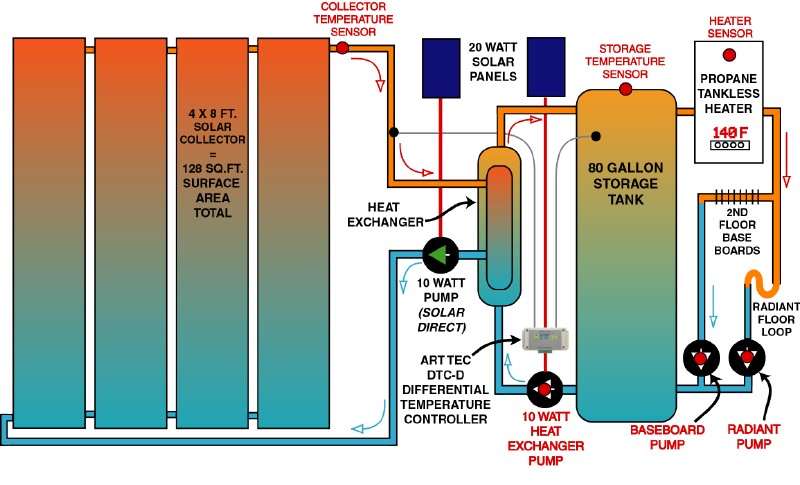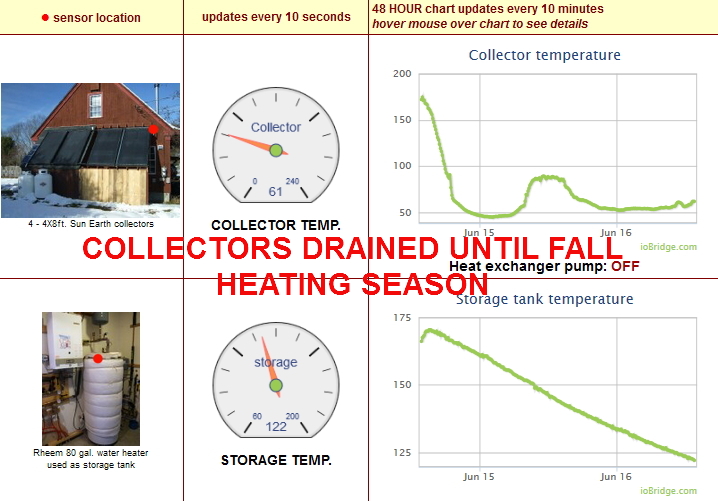|
|
|||
| Product Design | My Artwork | Living Sustainably | |
| Art Engineering | Levitation Kit | Solar Power | Chevy Volt |
| Solar Heating | Thermal Windows | ||
| Contact | About Me | Solar Hot Water | Solar Mower |
SOLAR HEATING SYSTEM
LIVE PERFORMANCE STATS
Collectors drained and system
shut down for the summer
 |
 |
 |
|
Things to notice:  The room temperature sensor is in the utility room that remains warmer than the rest of the space due to the leakage from the heating equipment. A sudden rise in that room temperature also correlates to the propane heater's waste heat contributing to the room temperature. Sharp increases in the room temperature are also partly due to my lighting the wood stove that has a heat reclaimer blower mounted in the flue above it that circulates hot air very quickly and raises the building temperature by several degrees quite rapidly. The propane heater only operates if the storage temperature is below 140F, and it brings the temperature up to 140 to feed the radiant loops. In the absence of solar gain the storage tank will settle out between 70 and 110°F. 110°F is the return temperature of the hot water from two baseboard radiators on the second floor, while 70° is the return temperature from the concrete radiant floor. The collectors augment this base temperature when the sun is shining. When you see the propane heater short cycling - that is when it is heating the 2nd floor via radiators, and the storage temperature typically will rise in steps each time it runs if it was below 110F. Click here to see a review of annual heating costs and propane consumption by heating season since 2001. On sunny days you will see the room temperature rise in the late afternoon due to the direct solar gain of sunlight entering the west facing windows. This effect can be significant in spring and fall. |
| I also monitor the solar domestic water heating system on my house, and the solar electric power generated by my solar array. If you are an electronics geek like me, then you need to know about the technology behind this web page. It is a device called an ioBridge that is designed to monitor and control things through the internet. It is affordable and relatively easy to set up. In order to monitor the AC and DC pumps on this page, I built my own interfaces to the ioBridge. Here are the schematics for them. |